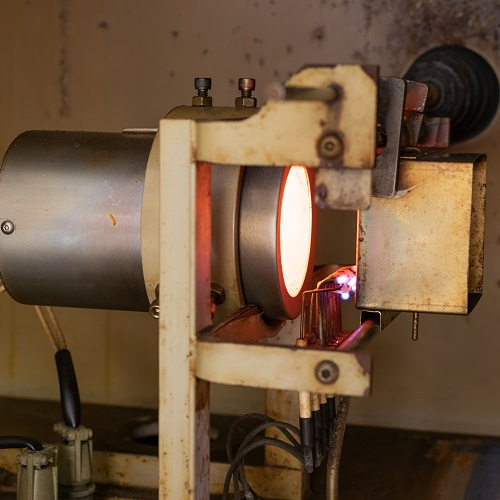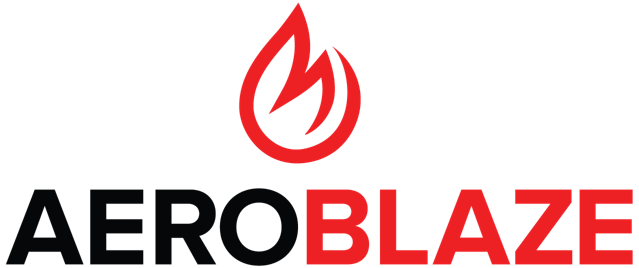Smoke Density
Smoke Density Test*
The Smoke Density test is used by the aerospace and transportation (railway) industries to determine the smoke generating characteristics of materials during combustion.
Test Methods

*Tested at our partner lab
Test Summary
A test sample is placed into a chamber and exposed to either radiant heat (non-flaming mode) or radiant heat with a flame (flaming mode). The sample is exposed to heat and/or flame for a specified length of time (typically 4 or 20 minutes), during which time a photometric system is recording light transmittance values to determine optical density. The smoke must not exceed a maximum smoke optical density value which differs based on the test specification used.
Test Sample Requirements
Test samples must meet the following requirements:
Regulatory Requirements
This test is typically used to show compliance with the following U.S. Federal Regulations:
Note 1: In the aviation industry, 14 CFR may also be referred to as "FAR" (Federal Aviation Regulations). You may see the requirements listed as FAR 25.853, etc.
Note 2: The European Union Aviation Safety Agency (EASA) uses similar Certification Specifications (CS) which correspond to those in the CFR. For example, the EASA regulations are listed as CS 25.853, etc. These regulations may also be referred to as "JAR" (Joint Aviation Requirements) and listed as JAR 25.853, etc.
Products Requiring This Test
Aircraft
Items in transport category aircraft require the Smoke Density test when they are located in a compartment occupied by the passengers. While there are some exceptions, these items typically include:Note: Some manufacturers such as Boeing and Airbus may require both Flaming and Non-Flaming mode on additional products not listed above.
Railway
Materials used in constructing a passenger car or a cab of a locomotive These items typically include:History of the Smoke Density Test
In 1966, the U.S. National Bureau of Standards (NBS) presented a paper on a fire test method for measuring smoke from burning materials. This NBS test method was adopted by the American Society for Testing and materials (ASTM) in 1979 as the E662 Standard Test Method for Specific Optical Density of Smoke Generated by Solid Materials. This ASTM test standard utilized the NBS Smoke Chamber.
In 1986, the ASTM E662 test standard was adopted by the Federal Aviation Administration (FAA) through the amendment of 14 CFR 25.853 - "Compartment Interiors". The new Section 25.853(d) required certain materials used in the construction of interior components to meet new smoke emission requirements specified in 14 CFR 25, Appendix F, Part V. These requirements were applicable to transport category airplanes with passenger capacities of 20 or more. Individual manufacturers and organizations also established their own internal versions of the aerospace Smoke Density test, such as Airbus (ABD0031/AITM 2.0007), Boeing (BSS 7238), McDonnell Douglas (DMS 1500), and ASTM International (ASTM F814, withdrawn in 1995). In order to facilitate improvements to the test standard without constantly changing the CFR, the FAA published Report DOT/FAA/CT-99/15 "Aircraft Materials Fire Test Handbook" in 1990. The tests in this handbook are considered an acceptable equivalent to those in the CFR. The handbook was updated in 2000 to DOT/FAA/AR-00/12, with the Smoke Density Test located in Chapter 6 of the handbook.
The ASTM E662 test standard was adopted by the Federal Railroad Administration (FRA) in 1999 through the creation of 49 CFR Part 238 - "Passenger Equipment Safety Standards". Section 238.103 "Fire Safety" required materials used in the construction of a passenger car or a cab of a locomotive to meet smoke emission requirements specified in 49 CFR 238, Appendix B.
Sources: Federal Register Vol. 53 No. 165 / Federal Register Vol. 64 No.91 / ASTM Vol. 6 No. 4 "A History of Fire Testing"
Additional Resources
| Resource | Description |
|---|---|
| 14 CFR 25.853 |
Compartment Interiors (Transport Category Airplanes) U.S. Regulations for FAR 25.853 at Amendment 25-116. |
| 14 CFR 25, Appendix F |
Appendix F to Part 25 (Transport Category Airplanes) U.S. Regulations, Criteria and Test Procedures. |
| 49 CFR 238.103 |
Fire Safety (Railroad; Passenger Equipment Safety Standards) U.S. Regulations for 14 CFR 49.238.103 as amended by 67 FR 42909. |
| 49 CFR 238, Appendix B |
Test Methods and Performance Criteria for the Flammability and Smoke Emission Characteristics of Materials Used in Passenger Cars and Locomotive Cabs U.S. Regulations, Criteria and Test Procedures. |
|
FAA Fire Test Handbook, Chapter 6 |
FAA Aircraft Materials Fire Test Handbook (DOT/FAA/AR-00/12); Chapter 6; Smoke Test for Cabin Materials. This handbook provides an acceptable means of compliance with the relevant regulations. This is the preferred test method to find compliance with the listed regulations. |
|
FAA Policy Memo PS-ANM-25.853-01-R2 |
Flammability Testing of Interior Materials Provides guidance on acceptable methods of compliance with the flammability requirements of 14 CFR Part 25 for commonly constructed parts, construction details, and materials. |
| ASTM E662 |
Standard Test Method for Specific Optical Density of Smoke Generated by Solid Materials This test method provides a means for determining the specific optical density of the smoke generated by test samples of materials and assemblies under the specified exposure conditions. |
Ask the Experts

Stuck? Our experts will help you determine the best solution for your needs.
Contact Us